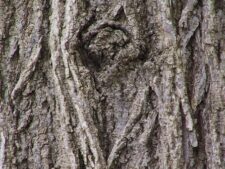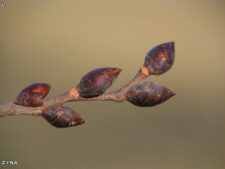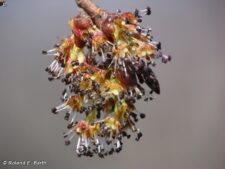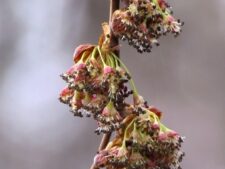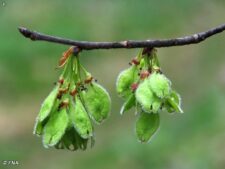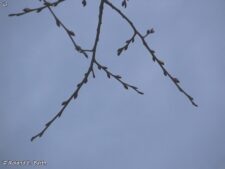
This medium-sized native tree has a light gray bark with deep, forking ridges (B). The leaves are alternate on the twigs, elliptic, sharply pointed and usually unequal at their base. The leaf margins are doubly toothed, with small teeth along the lower edge of the larger ones. A pair of lance-shaped stipules is found at the base of fresh leaves (A). The dark brown flower buds have smooth scales (C). The flower clusters, with unequal flower stalks, appear before the leaves (D,E). The fruit, a flat samara, has a notched tip and hairy margin; it appears in clusters by April and may be seen scattered on the ground as well (F). The typical elm winter twig silhouette is shown at (G). When compared to our three other elms, Siberian Elm (Ulmus pumila) has spherical buds and round samaras with smooth margins. Slippery Elm (Ulmus rubra) has buds with dense, red-brown hairs. Cork Elm (Ulmus thomasii) has slim buds and corky branches.
In uplands as well as along streams, flowering in March and April. In Fontenelle Forest, common, look along the edge of the field at Camp Logan Fontenelle. At Neale Woods, common, for instance in Raccoon Hollow.
Because a lot of our American Elms are dying off, saplings have recently been planted to ensure a continuing presence of this native tree.
The content of NatureSearch is provided by dedicated volunteer Naturalists of Fontenelle Forest who strive to provide the most accurate information available. Contributors of the images retain their copyrights. The point of contact for this page is: Roland Barth.

